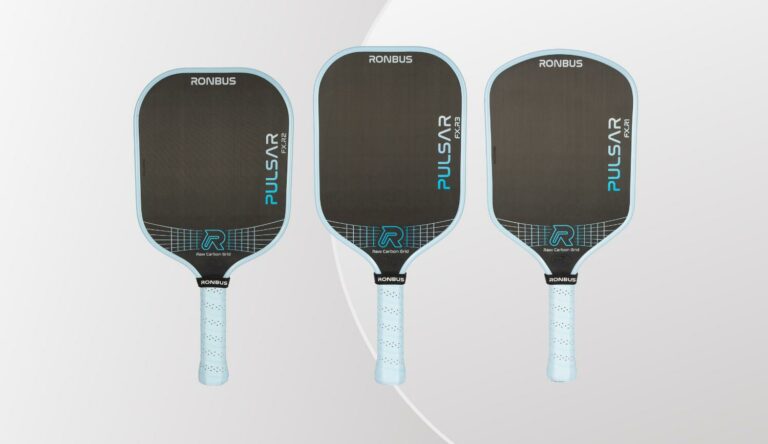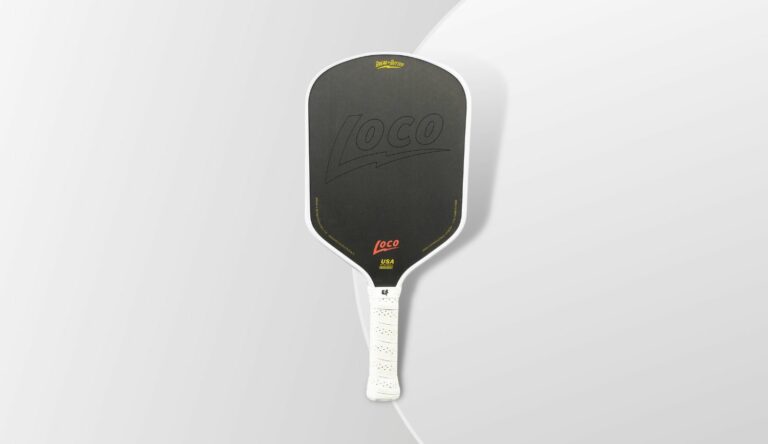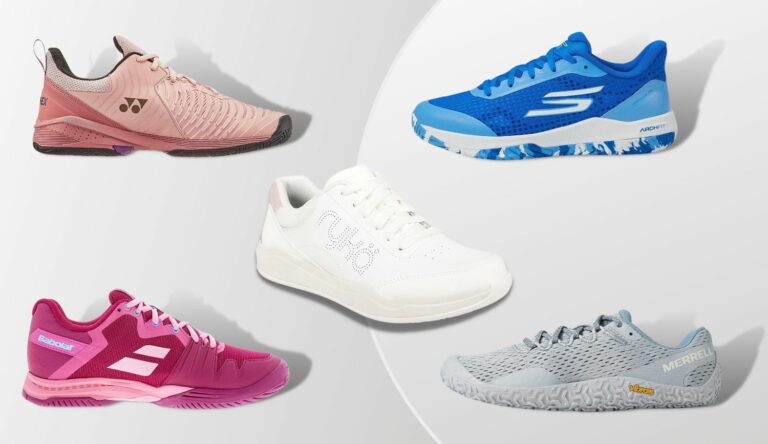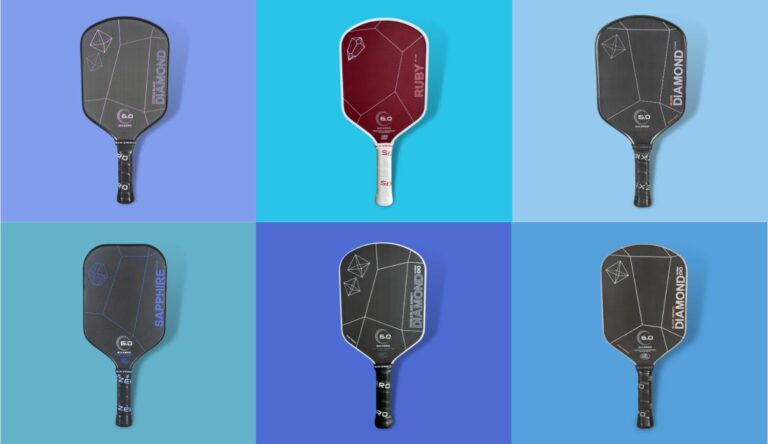You’ve probably heard about the third shot drop and seen it in action. It’s one of the most important shots in pickleball (and one of the hardest to perfect).
As challenging as it is, it’s a shot that you’ll need in your arsenal if you want to perform consistently against good competition.
In this post, you’ll learn everything you need to know to master your third shot drop game.
Contents
What is the third shot drop?
The third shot drop is a specific type of “drop shot” that’s made on the third shot of a rally after the first two shots, the serve and return.
Functionally, the third shot drop is hit similarly to how you’d hit a dink. But it’s typically hit near the back of the baseline following a deep return, rather than close up at the net.
Just like a dink, the goal of the third shot drop is to make the ball arch upwards and land soft and unattackable in the opponent’s kitchen/NVZ.
The third shot drop is much harder than a dink, though, because it needs to be hit from further back on the court and in response to hard and fast returns, which are harder to put a soft touch on.
Some tennis players will be fortunate enough to pick this one up quickly. There are similar shots in tennis. It’s a bit of a combination of a tennis moonball and drop shot.
Note: There are two other types of third shots that you may commonly see: the third shot drive and the third shot lob, which we cover in other posts.
Why is the third shot drop so important?
In pickleball doubles play, the third shot is the most important shot of each rally for the serving team. A good third shot nullifies the receiving team’s positional advantage, while a bad one destroys the serving team’s chances to score a point.
To understand the importance of the third shot drop, it’s key to understand court positioning. In pickleball, the team that’s up at the net controls the pace of the game. Thus, being able to get to the net first is always an advantage.
The team that hits the third shot in a rally is at a disadvantage because they have to stay back and allow the second shot to bounce before they hit the third shot themselves, while the other team was able to move up and sit comfortably at the kitchen line after they hit the second shot.
A soft, arching drop that’s well-placed and drops right into your opponent’s kitchen keeps the ball moving slowly, which gives you time to get up to the kitchen line.
It also forces your opponent to have to dink the ball back over the net to you (i.e., making it unattackable). This is key because attackable fourth shots are very dangerous due to how much shot selection they allow for.
A good dink can even force your opponent to pop the ball up and give you a chance to hit a fifth shot attack.
When to use the third shot drop
Some players (and even coaches) might tell you to drop the ball on every third shot opportunity you have. Some will say to drop it every 5th, 7th, and 9th shot too (or at least until you’re up at the kitchen). This is not sound advice.
You want to use the third shot drop often, no doubt. You really should favor it when playing higher-skilled players than yourself if you’re able to hit consistent drops.
But in some circumstances, a third shot drive or lob can give you better results. For example, a short return begs to be driven back. You can get momentum on it for power and get right up to the kitchen line fast with that momentum.
There’s also the element of surprise. You want to keep your opponent guessing. Mix a sneaky lob or surprising drive into your third shot selection, and they won’t be able to keep you figured out. This works even better when you get more skilled at disguising your shots right up until you deliver them.
How to hit a third shot drop like a pro
Master your dink mechanics. The physical mechanics of the third shot drop are pretty much all dink. Dial in those fluid upswing motions and tune it for distance. This will require a lot of repetition and practice maintaining soft hands.
Read every third shot’s attackability. This is an indirect skill for hitting your third shot drops well, but it is still necessary. The main purpose of the drop is to help you get up to the net. If you hit too high or far, then the ball will be attackable for your opponent.
When your third shot is attackable, the last thing you want to be doing is hastily moving up to the kitchen line. You will run straight into a drive from your opponent or get a passing shot placed behind your feet.
Pay close attention to the trajectory of the ball when you or your teammate hits a third shot drop. If the shot goes high, then wait back and be ready to play defense. You can try to do another drop on the next shot (5th). If the drop stays low and short, be ready to move to the net fast.
Many doubles partners will audibly communicate when a drop is good or not. You might encounter a “yes” or “good” signal from a teammate to indicate the drop was hit successfully. You might hear “no” or watch” if the ball was hit too high and will be attackable.
Be easy on yourself. So much of pickleball is a mental game. The mechanics of a third shot dropping are hard to master, and it can be easy to get down on yourself. Try to work on your mindset and stay neutral, or even positive, when you’re hitting a hard stretch of missed drops. Continued improvement is the name of the game.
How to practice and drill your third shot drop
Do dinking drills. Some of which include dink for points and triangle dinks. If you spend time drilling just one shot in pickleball, consider making it this one. Just remember, practice makes permanent, so be careful that you practice correctly.
Commit to practicing your drops in games. If you want to improve your third shot drop, commit to attempting it as often as you can in rec games. Playing in a real game cements the shot into your psyche more than a sterilized practice environment. Hit drops on your 5th and 7th shots whenever you find yourself back, too. Chances are it won’t make you feel warm and fuzzy inside at first, but just keep going until your shots feel right.
Conclusion
Hopefully, this article has clarified third shot drops for you. Don’t worry if it feels confusing or if your drop isn’t working how you want it to so far. The third shot drop takes time to polish, for everyone. Just keep practicing, and you’ll get it.
Remember to also work on your third shot drive. It’s essential to have a varied shot selection with your 3rd shot so you can capitalize on certain 2nd shot returns and to keep your opponent on their toes.






